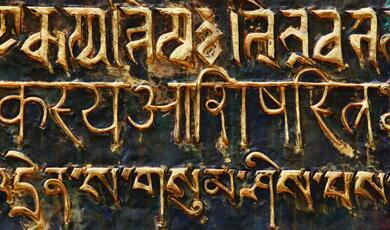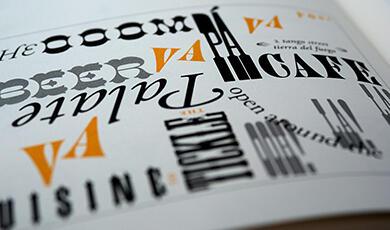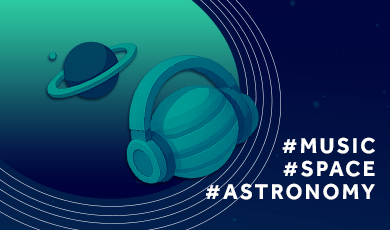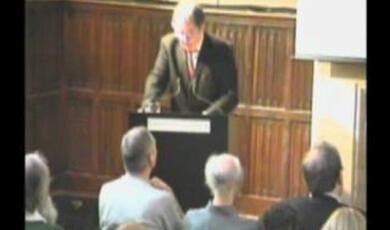Roy Howat considers two Debussy piano pieces, “Les sons et les parfums” of 1910 and “Les soirs illuminés par l’ardeur du charbon” of 1917, whose titles come from within Baudelaire poems Debussy set in 1889 (‘Le balcon’ and ‘Harmonie du soir’). Like ‘Clair de lune’ and ‘La fille aux cheveux de lin’ (two piano pieces that directly share their title with one of his earlier songs), they are musically quite independent of the associated songs, yet invite exploration of whatever subtler relationships they may bear to these particularly structured poems of Baudelaire’s, sometimes via other Debussy works.
12 April 2012
Resonances of Baudelaire in
Debussy’s Piano Music
Roy Howat
This paper considers two Debussy piano pieces, “Les sons et les parfums tournent dans l’air du soir” (from the First Book of Preludes of 1910) and “Les soirs illuminés par l’ardeur du charbon” of 1917, in relation to the two Baudelaire poems where these titles figure as lines, ‘Harmonie du soir’ and ‘Le balcon’. Debussy had already set both poems (and thus the lines involved) in 1887–9, in his Cinq poëmes de Charles Baudelaire.
An immediate question for pianists is: to what extent might the links with the songs impinge on our interpretation of the piano pieces? One might also consider the less immediate corollary, of whether the later piano pieces throw retrospective light on the associated songs.
Like ‘Clair de lune’ and ‘La fille aux cheveux de lin’ (two other Debussy piano pieces that share a title with an earlier Debussy song), “Les sons et les parfums” and “Les soirs illuminés” are musically independent, making no audible reference to the associated songs; each of them, however, does reveal other musical cross-references.
“Les soirs illuminés par l’ardeur du charbon” is the surprise piece (the italics and quotation marks are Debussy’s own): discovered only in 2001, the manuscript is one that Debussy gave his musical coal merchant early in 1917, as thanks for delivering scarce fuel supplies during a horrendously harsh wartime winter. (The piece’s title thus neatly explains itself.) Not intended for publication, the piece starts by quoting the opening of “Les sons et les parfums”, but in the A-flat key of the latter piece’s second page, and in a slow-treading 4/4 rhythm rather than the Prelude’s waltz lilt; the piece later sounds fleeting echoes of ‘Canope’ and ‘Les tierces alternées’ (from the Second Book of Preludes of 1913), as well as of a distinctively rhythmic motive from the first orchestral interlude in Pelléas et Mélisande. The piece’s central theme (or themes, as it’s really a thematic duet between the hands at the piano) makes no obvious allusion to other works, but it certainly has a tinge of the café, or café-concert, that’s endemic to Baudelaire, a flavour that equally tinges “Les sons et les parfums”, notably through what Alfred Cortot called its ‘valse bleue’ (in La musique française de piano).
Intriguingly, “Les soirs illuminés” sounds no equivalent echoes of Debussy’s piano Études of 1915, nor of his three sonatas started in 1915, including the Violin Sonata which he was just finishing early in 1917. There’s one strange hidden connection, though, for what it’s worth: most unusually for an unpublished piece, Debussy supplies “Les soirs illuminés” with a metronome marking, crotchet = 55, an odd number since clockwork metronomes all had the calibrations 54 or 56 – not 55 – and anyway the difference between either of these and 55 would be imperceptible. (Besides which, Debussy’s piece really needs to move a notch or two faster than even 56.) That same metronome marking appears above the first and third movements of Debussy’s Violin Sonata (where musically it does work well) – and nowhere else at all in his output. Why his sudden obsession with that 55? The only possibility I can think of is that Debussy, then seriously ill with cancer and self-confessedly prone to superstition, was thinking of his next due birthday he would reach in August 1917, his 55th, and perhaps just hoping he would live to it. (He did, but it was his last: he died in March 1918.)
Whatever we make of that, and in full knowledge that Debussy didn’t intend or regard “Les soirs illuminés par l’ardeur du charbon” as an immortal masterpiece, we can be glad to have it now available to pianists (published in 2003 by Durand, available either on its own or as part of the Œuvres complètes de Claude Debussy).
The musical cross-currents involving “Les sons et les parfums tournent dans l’air du soir” are more immediately perceptible, but still tangential. From bar 3 the piece features a beguiling chromatic sequence of seventh chords that can be traced back to Debussy’s Cinq poëmes de Charles Baudelaire – but not to ‘Harmonie du soir’. As so often with Debussy, we have to look peripherally rather than right at the obvious or expected place, and where we find this link is near the end of the first song, ‘Le balcon’ (ironically the source of “Les soirs illuminés”), where the similar sequence of sevenths enters first at the words ‘Je sais l’art d’évoquer’, but then is repeated, at a pitch nearer the piano Prelude, at the words ‘les parfums’. This obliqueness of cross-reference might be seen as endemic to Debussy, for the opening bars of ‘Le balcon’ also echo in his First Book of piano Preludes – but again not in “Les sons et les parfums” but at the volume’s very start, in the opening bars of ‘Danseuses de Delphes’.
Can we extrapolate, from these evidently diffuse links, any cross-referential aims that Debussy might have intended? My first observation again is peripheral: that the two Baudelaire poems in question are the ones with repeated-line structures (five-line enclosed stanzas in ‘Balcon’ in which the fifth line repeats the first line; pantun in ‘Harmonie’ where the second and fourth lines of each stanza then form the first and third of the following stanza).
The two associated piano pieces certainly involve repetitions of motives or patterns, albeit that being an almost banal norm for musical structures. This becomes more intriguing in “Les sons et les parfums”, where such repetitions start tumbling over each other in ways that seem more redolent of literary than musical norms; while this cleverly conveys a whiff of pantun, closer analysis doesn’t bear out any literal deployment of such a structure in the piece’s déroulement. It’s equally frustrating to try and find any possible shadowing of Baudelaire’s poem in the musical narrative of Debussy’s Prelude: the best one can grasp is probably a sense on the piece’s last page (from bar 41) of the poem’s last stanza, along with the general whiff of café-concert (notably the ‘valse bleue’ of ‘le violon frémit’). It’s perhaps ironically apt that the Prelude’s title is one of the few lines in Baudelaire’s poem that occurs only once (stanza 1 line 3, it evades the pantun sequence). With that in mind, we perhaps have to be wary of assuming any identity between the Prelude “Les sons” and either the poem or Debussy’s earlier setting thereof.
In this apparently blind corner, it might help if we conversely consider what we might construe as Debussy’s extra-musical, or quasi-literary, aims in his Cinq poëmes (that is, beyond writing a good set of memorable songs in homage to one of his literary idols). In the context of Baudelaire’s famously heady relationship with Wagner’s music (or at least what of it he was able to hear while alive), Debussy’s own heady but turbulent relationship with Wagner’s music, and the unusually overt Wagnerian flavour that pervades this set of songs (more than anywhere else in Debussy’s output), I’m immediately tempted to see Debussy as deliberately setting out in this cycle to ‘award’ Baudelaire the sort of Wagnerian music of which Baudelaire might himself have dreamt around his poetry – and which of course he’d never in a hundred years have obtained from Wagner.
Any such speculation is oddly borne out by the curious rarity of Baudelaire in the mélodie repertoire, at least in relation to his repute among musicians. Debussy, much though he adored this poetry, never tried to set Baudelaire after these five songs, and – as far as we know – had never tried before, despite almost a decade of marination in Verlaine. He was not alone. The first artsong settings of Baudelaire date from 1870 onwards (a few years after Baudelaire’s death), and comprise one by Chabrier’s (L’invitation au voyage), two by Duparc (L’invitation au voyage and La vie antérieure) and three by Fauré (Hymne, La rançon and Chant d’automne). Fauré’s, incidentally, make up a remarkably Baudelairean sequence of Love, Reason and Mortality, a very interesting grouping long obscured by the songs’ arbitrary dispersal through the long-established Choudens-Hamelle Fauré First Collection. Debussy was perhaps not unaware of this, for his own group launches itself, in ‘Le balcon’, with a very similar chromatically rising figure to the one that pervades Fauré’s Hymne.
The ‘Reason’ aspect of this equally appears in Debussy’s meticulous setting: he subtly ‘observes’ or even adapts the pantun structure of ‘Harmonie du soir’, his song reusing the same thematic material for each repeated line but in harmonically or tonally varied form. One might read this is a musical adaptation of the way each repeated line in the poem emerges with a different ‘tonal’ flavour or even semantic sense because of its altered context and function (returning as an antecedent instead of consequent line).
However ‘Wagnerian’ they may sound, Debussy’s Baudelaire settings also have a distinct tinge of caf’-conc’. Consider what would otherwise seem a redundancy in two of their tempo headings, ‘Allegro con moto’ and ‘Andante con moto’, an insistence presumably designed to keep them moving and dancing in a way that, rightly or wrongly, is traditionally less associated with an evening at Bayreuth, silently surrounded by neighbours all piously dressed in black. The opening of ‘Le balcon’, with its blur of minor and major 3rd (E-flat and E) emerges as distinctly bluesy, echoing a similar passage in the same key on the second page of ‘Paysage’, the opening piece of Chabrier’s Pièces pittoresques of 1880.
This opens into a wider context. Elsewhere (The Art of French piano music, p. 84) I found myself being increasingly drawn into the strong affinities linking Debussy, in his works of the mid-and late 1880s, to the ‘Wagnerian’ aspects of Chabrier (rather than Wagner himself), notably in Gwendoline, a work that Debussy musically adored, and whose ‘Épithalame’ (Bridal Song) he had quoted, with deadly irony, in ‘Spleen’ of 1888, the last of his Ariettes oubliées that immediately precede his Baudelaire settings.
Immediately after his Baudelaire settings, Debussy again quoted the same Chabrier chorus in his incomplete opera Rodrigue et Chimène, which like Gwendoline was composed to a libretto by the arch-wagnériste Catulle Mendès. In brief, knowledge of Chabrier’s music can put something of a different slant on Debussy’s particular form of wagnérisme, one that often points at Chabrier, a composer he always loved and revered. 1889 is a doubly crucial year in that regards, for Debussy’s closest traced personal contact with Chabrier dates precisely from that summer, when both of them travelled together with mutual friends in the French artistic ‘pilgrimage’ to Bayreuth.
Some more direct and specific, yet more hidden, links with Wagner have been fascinatingly argued by Nicholas Routley, in a concise yet densely-argued article, ‘Debussy and Baudelaire’s Harmonie du soir’. In brief, Routley suggests that the Prelude “Les sons et les parfums” subtly revisits Baudelaire’s poem (more than it revisits the song), but almost like a burglar, quietly illuminating the poem with apposite Parsifal references that Baudelaire, of course, never knew. Routley thus views the title “Les sons et les parfums” almost as a typical Debussy bluff or diversion, ironically quoting the poem’s least Wagneresque line.
Again this can support the idea of Debussy rendering Baudelaire a posthumous ‘homage’ (of which several can be inferred in his Preludes: for example to Albéniz, to Falla, and even to the American dancer Loïe Fuller and American clown Edward Lavine). What musician has not occasionally dreamt of music by one’s favourite composers beyond what exists in print? I’ve certainly dreamt at times of music ‘by’ Debussy that doesn’t exist in the light of day, just as Fauré confessedly did of both Schumann and Gounod. If Debussy ever dreamt similarly of ‘Wagner’ music clothing Baudelaire’s poetry, these five songs are surely it, and it’s probably why that’s all there is.
An intriguing postscript might be added, in relation to three Debussy titles that link instrumental pieces with songs and their poems. The incidental interest lies in the sequence of genres that lead to and through the Debussy works:
‘Le balcon’:
a) Baudelaire, ‘Le balcon’, 1857, poem
b) →song setting, 1887–9, by Debussy: no. 1 of Cinq poëmes de Charles Baudelaire
c) →piano piece, 1917, title taken from the above poem/song
‘Harmonie du soir’:
a) 1851 instrumental piece by Liszt, ‘Harmonies [sic]du soir’, no. 11 of Etudes transcendantes
b) (?)→poem, 1857, by Baudelaire: ‘Harmonie du soir’ (1st edn of Les fleurs du mal)
c) →song, 1887–9, by Debussy: no. 2 of Cinq poëmes de Charles Baudelaire
a) →new piano piece, by Debussy: “Les sons et les parfums tournent dans l’air du soir” (Preludes Book 1): the sequence returns to where it started
‘La fille aux cheveux de lin’:
a) anon. Scots traditional tune, words lost or corrupted
b) →song, words (poem) added to existing tune by Robert Burns: Lassie wi’ the lint-white locks
c) →new but partly derived poem, by Leconte de Lisle, La fille aux cheveux de lin
b) →2ndsong, 1882, by Debussy:La fille aux cheveux de lin
a) →2nd (and musically independent) wordless piece, Debussy Prelude, 1910 (back to something like where the sequence started)
© Roy Howat, 2012
References:
Alfred Cortot: La musique française de piano, 4 vols. Paris: Rieder, 1930
Roy Howat: The Art of French piano music: Debussy, Ravel, Fauré, Chabrier. London & New Haven: Yale UP, 2009
Nicholas Routley: ‘Debussy and Baudelaire’s Harmonie du soir’, Musicology Australia 15 (1992): 77–82


 Login
Login







